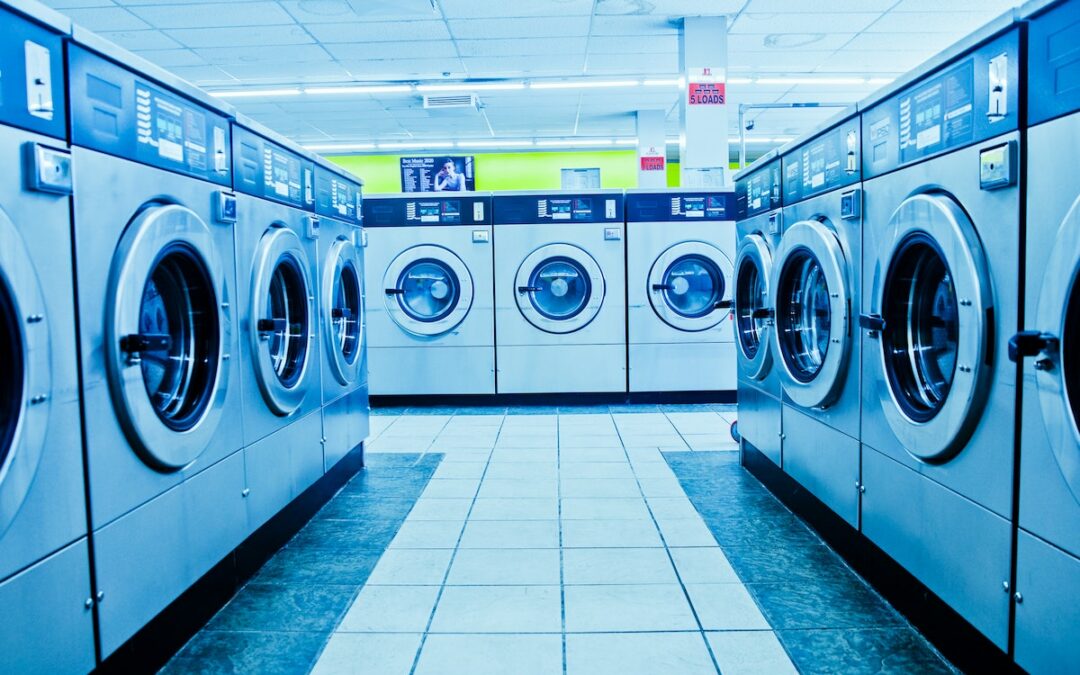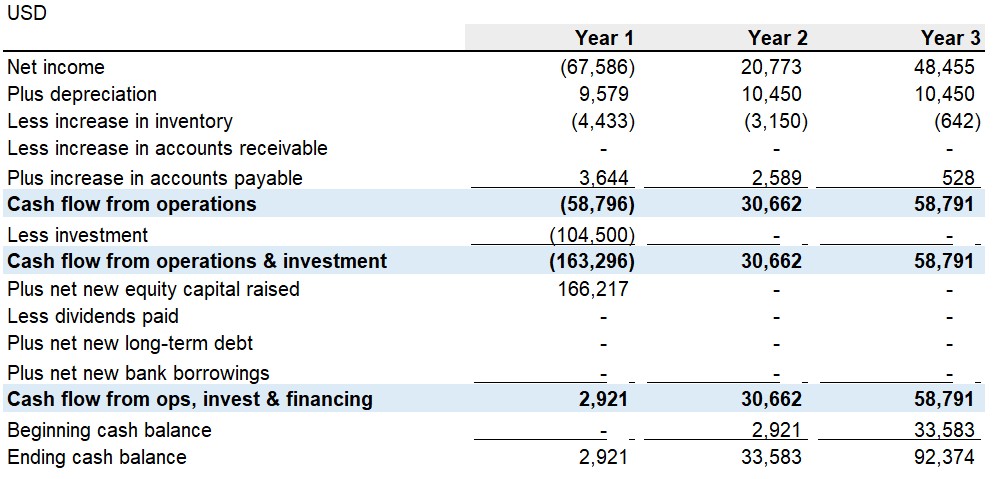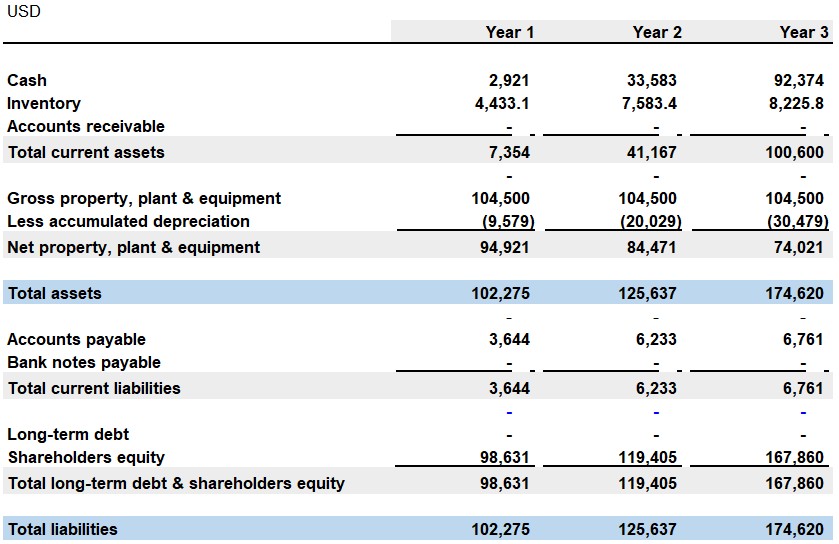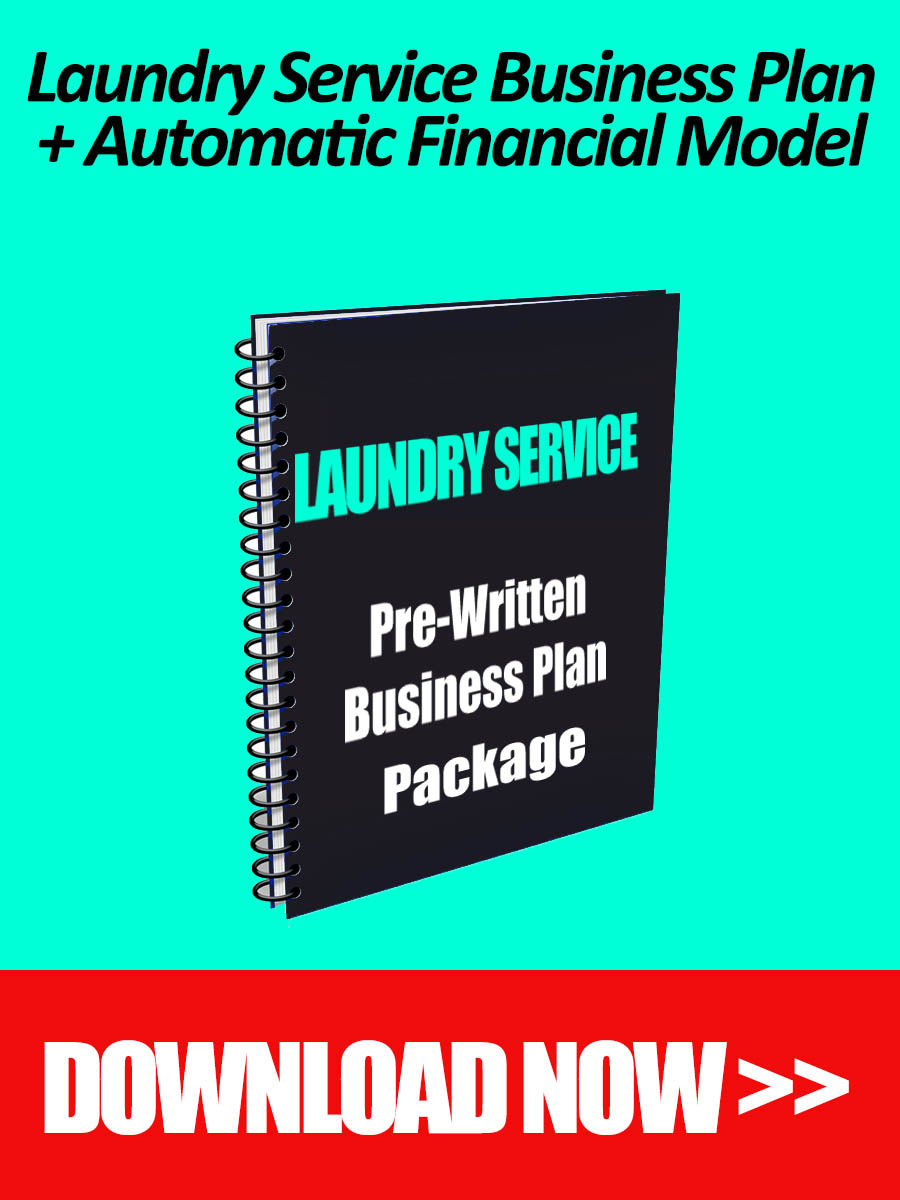Starting and running a successful laundry business requires more than just having a cool branding and providing a good service, it also requires a solid financial plan that can guide the business through its early stages and help it grow and thrive over time. A financial plan is a crucial tool for any business owner, and it’s especially important for a laundry project where the costs of equipment, utilities, and labor can add up quickly.
In this article, we will discuss the benefits of building a detailed financial plan for your laundry venture, including forecasting costs and revenue and understanding the financial position of the business by projecting the income statement, cash flow statement and balance sheet.
Armed with this information, laundry business owners can make informed decisions on how to best invest their funds, manage costs and grow revenue, ultimately leading to long-term success.
Laundry Financial Plan Template in Excel
Before we dive in our article, we would like to introduce you to our automatic laundry financial plan template in Excel. This spreadsheet has been carefully prepared by our expert business planners and can be used to build a solid laundry financial plan in record time. It comes as part of our ready-made laundry business plan package that also includes a pre-written business plan in Word tailored to the laundry industry.
Now, let’s crack on!
Laundry Financial Plan: Cost Forecast
The first step in planning your laundry financials entails understanding the costs involved in such a project. The cost forecast outlines the projected costs of running the laundry over a certain period of time, typically a year. These costs can be broken down into several categories such as:
- Fixed costs: For a laundry business, fixed costs usually include rent, insurance and employee salaries. These costs do not change with the level of business activity and must be paid regardless of whether the laundry is generating revenue or not.
- Variable costs: These include the cost of consumables and supplies such as detergent, bleach and water, as well as the cost of utilities such as electricity and gas bills. The more services the business provides, the higher these variable costs will be.
- Semi-variable costs: These costs have both a fixed and a variable component. For example, equipment lease payments may have a fixed portion and a variable portion based on usage. Maintenance costs may also have a fixed portion for regular maintenance fees and a variable portion for major repairs or replacements.
- Capital expenditures: A laundry business involves acquiring long-term assets such as washing machines, dryers and other equipment. These investments can be substantial and may need to be financed over time. More on that in the next section.
It’s also important to note that in addition to the above costs, a laundry business may also have other running costs such as marketing, advertising, legal and accounting fees. These are also part of your laundry’s operating costs also called Opex.
When creating a cost forecast, it’s important to use accurate and up-to-date data to make informed estimates. For instance, if you are forecasting the utilities expenses, you should use the most recent bills and rate information available. If you are forecasting the cost of supplies, you should use current pricing data and take into account any expected changes in the cost of materials as well as inflation.
Laundry Capital Expenditures
Capital expenditures, or CapEx for short, refer to the funds a business uses to acquire or improve long-term assets such as equipment, vehicles, or real estate. They are usually capitalized rather than expensed. However, your accountant will depreciate them over the lifetime of the assets and this will incur a charge on the Profit and Loss statement as we will see later on. For a laundry business, some examples of capital expenditures include:
- Laundry equipment: Equipment such as washing machines, dryers, and presses are a significant capital expenditure for any laundry business. These expenditures can vary widely depending on factors such as the type of equipment, its capacity and energy efficiency. Usually, bigger laundries will require a bigger upfront capital to be invested in such machines and equipment.
- Vehicles: If your laundry business provides a pick-up and delivery service, vehicles such as vans or trucks may be necessary to provide this service.
- Property: In case you plan to purchase a locale to open your laundry rather than renting a place, the property will be considered as a major capital expenditure.
- Renovations and improvements: Depending on the condition of the facility, your laundry business may require you to make renovations and improvements to the space. These costs may be accounted as CapEx (rather than OpEx).
- Technology: With the need to digitize and automate many business processes in line with recent trends, your laundry business may need to invest in technology such as software, point of sale systems or data management systems. All these investments will be considered as CapEx.
It’s important to note that capital expenditures can be significant and while some may be financed over time, many have to be purchased upfront. When creating a financial plan for your laundry business, it’s important you take capital expenditures into account and plan for their financing (debt or equity?). Additionally, it is important to consider the useful life of the asset and the expected return on investment.
Startup Costs of a Laundry Business
Startup costs refer to the expenses incurred when starting a new venture. For a laundry business, some examples of startup costs include:
- Legal and accounting fees: These may include costs associated with registering the business, obtaining licenses and permits, and setting up the laundry’s accounting and financial systems.
- CapEx: As mentioned earlier, certain laundry equipment, your shop (in case you are not renting) and vehicles may need to be purchased up front to have an operational laundry from day 1.
- Marketing and advertising: To attract customers, your laundry business will likely need to invest in marketing and advertising. You need to have a certain budget for the initial launch phase upfront.
- Initial working capital: You need an initial sum of money to cover the running costs until your revenues become significant enough to cover for the day to day expenses.
It’s important to note that startup costs can vary widely depending on factors such as the size of the laundry, the location and the equipment. We advise you to create a detailed budget that takes all of these costs into account to ensure that the business has enough funding to get off the ground and become sustainable.
Revenue Forecast for a Laundry Business
A revenue forecast is an estimation of the income a business expects to generate in the future. There are several factors to consider when creating an accurate revenue forecast for a laundry business:
- Pricing: You need to determine the prices for services such as washing, drying and pressing clothes. Your rate card will be determined by the cost of the service, the competition and your target market.
- Volume: How many customers will you serve and how often they will use your laundry services? Answering these questions depends on factors such as the size of the market, the competition, and your marketing efforts. But once you have a good understanding of your expected daily, weekly, monthly and annual volume, computing your average revenue will become much easier.
- Seasonality: Many laundry businesses experience fluctuations in demand throughout the year. For instance, the demand for laundry services may be higher during the summer months when people are traveling and may be lower during the winter. Understanding the seasonality is thus crucial to properly forecast your laundry’s sales over time.
- Additional services: You can generate additional revenue by offering additional services such as alterations or express pickup and delivery. These revenue streams should also be properly accounted for in your revenue forecast.
Remember, when creating a revenue forecast, it’s important to use historical data and industry benchmarks to inform the estimates. It’s also important to be realistic and conservative when forecasting your laundry revenue. A revenue forecast that is too optimistic can actually be erroneous and make your life difficult during the execution phase.
Break-even Analysis for a Laundry Business
So what is a break-even analysis? Let’s try to provide you with a simple definition. In a nutshell, it is a financial tool that helps a business determine the point at which it will begin to make a profit. The break-even analysis calculates the point at which your business will have earned enough revenue to cover its costs.
To perform a break-even analysis for your laundry business you need to first estimate the fixed costs, variable costs, and revenue. Once this is done, you then calculate the break-even point by dividing the fixed costs by the difference between the revenue and variable costs (this is called the “contribution margin”).
Let’s go through an example to help you better understand how this works:
Imagine that your laundry has a fixed cost of $50,000 and a variable cost of $2 per load of laundry. Let’s also assume that you charge $5 per load, the break-even point can then be calculated as follows:
- Fixed costs: $50,000
- Variable costs: $2 per load
- Revenue: $5 per load
- Contribution Margin: 5 (revenue) – 2 (variable costs) = $3 per load
- Break-even point= 50,000 (fixed costs) / 3 (contribution margin) = 16,667 loads of laundry
This means that your laundry business will need to wash and dry 16,667 loads of laundry to cover its costs and start making a profit. It’s important to note that the break-even point is a theoretical point, in practice it may take more or less than the calculated volume to reach the breakeven.
A break-even analysis can help you plan for the business expenses, make informed decisions about pricing and measure the general performance. It can also help you identify potential problems before they become critical, such as high variable costs or low revenue. By understanding your laundry’s break-even point, you can make adjustments to the business concept and operations to increase your chances of success.
Income Statement of a Laundry Business (or P&L)
An income statement, also known as a profit and loss statement, is a financial document that summarizes your laundry’s revenues, expenses and profits over a specific period of time. This statement is used to provide an overview of your business’s financial performance and is typically prepared on a monthly, quarterly, or annual basis.
So the income statement (or P&L) would show revenue from the sale of laundry services, as well as costs associated with operating the business. As discussed in the previous section, these costs can be divided into two main categories: variable costs and fixed costs.
To prepare an income statement for a laundry, start by listing the revenue for the period in question (example one month). Next, list your variable costs, such as the cost of detergent, electricity and water. After that, list the fixed costs, such as rent, utilities, insurance and salaries.
Finally, you can now calculate the net income (also called net profit) by subtracting the total costs from the total revenue. The net income represents the money left over after all expenses have been paid and is a key metric to help you evaluate the performance of your laundry business.
A sample laundry income statement might look like this:
It’s important to note that the income statement should be prepared in accordance with the GAAP (Generally Accepted Accounting Principles) or other international accounting standards.
A P&L statement can help you understand the financial performance of your laundry over a specific period of time, identify areas where you can reduce costs and make informed decisions about your pricing and expansion plan. By regularly reviewing your income statement, you can gain a better insight into your laundry’s financial situation and make adjustments to improve its financial performance.
Cash Flow Statement of a Laundry Business
A statement of cash flows is a financial document that shows you the flow of cash into and out of your laundry business over a specific period of time. This statement is used to provide an overview of your laundry’s liquidity and is typically prepared on a monthly, quarterly, or annual basis.
The statement of cash flows is divided into three main sections: cash flows from operating activities, cash flows from investing activities, and cash flows from financing activities.
- Cash flows from operating activities: This section shows the cash generated or used by your laundry from its main operations. This would include cash received from customers for laundry services and cash paid to suppliers for detergent, electricity and other operational expenses.
- Cash flows from investing activities: This section shows the cash generated or used by your laundry from investment activities including cash used to purchase new equipment or cash generated from the sale of old equipment.
- Cash flows from financing activities: This includes cash financing received from loans or capital injections, or cash used to repay loans or distribute dividends to shareholders.
Here is how your laundry’s cash flow statement might look like:
To summarize, a cash flow statement can help you understand the liquidity of your laundry business, identify areas where you can improve the cash management and make better decisions about investments and financing.
Laundry Balance Sheet
A balance sheet is a financial document that shows a snapshot of your laundry’s financial position at a specific point in time. It is divided into two main sections: assets and liabilities.
Assets: This section lists all the resources that your laundry owns, including cash, accounts receivable, inventory, equipment and property.
Liabilities: This section lists all the debts that your laundry owes, including accounts payable, loans and other financial obligations.
The balance sheet also includes the business’s equity, which is calculated by subtracting liabilities from assets. For a laundry project, equity might include the owner’s initial investment, profits retained by the business and any additional investments made by investors.
Check the laundry balance sheet sample below:
Laundry Financial Plan: Final Thoughts
In conclusion, building a financial plan for a laundry business is crucial for its success. A comprehensive financial plan should include a detailed cost forecast, revenue forecast, break-even analysis, income statement, cash flow statement and balance sheet.
These financial statements provide a clear picture of the laundry’s financial position, enabling you, the owner, to make informed decisions on how to best invest, manage costs and grow revenues.
Since a well-crafted financial plan is a valuable tool for any laundry owner looking to achieve long-term success, we suggest you purchase our ready-made laundry business plan package. It comes with an automatic financial model in Excel and a pre-written business plan in Word tailored to the laundry business. You can easily customize these documents and fit them to your own laundry project, no financial or accounting expertise needed.







